-
 bitcoin
bitcoin $111375.742210 USD
-8.60% -
 ethereum
ethereum $3780.311592 USD
-13.98% -
 tether
tether $1.001299 USD
0.07% -
 bnb
bnb $1093.375857 USD
-13.01% -
 xrp
xrp $2.339375 USD
-16.91% -
 solana
solana $185.029017 USD
-16.69% -
 usd-coin
usd-coin $1.000230 USD
0.04% -
 tron
tron $0.319531 USD
-5.16% -
 dogecoin
dogecoin $0.190791 USD
-23.59% -
 cardano
cardano $0.638663 USD
-21.82% -
 ethena-usde
ethena-usde $0.998483 USD
-0.20% -
 hyperliquid
hyperliquid $37.741486 USD
-14.68% -
 chainlink
chainlink $17.229851 USD
-22.17% -
 stellar
stellar $0.316546 USD
-16.74% -
 bitcoin-cash
bitcoin-cash $507.861193 USD
-13.18%
What is a "node" and what does it do?
Nodes are essential computers in a blockchain network that validate transactions, maintain the ledger, and ensure decentralization, security, and trustless consensus across the system.
Oct 10, 2025 at 02:54 pm
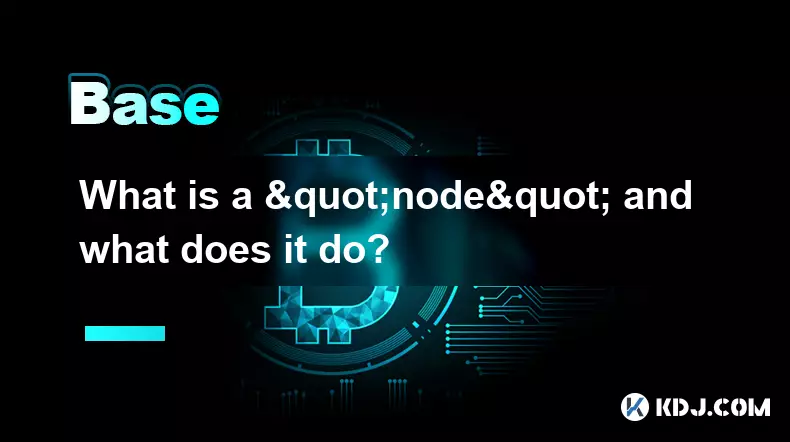
Understanding the Role of a Node in Blockchain Networks
1. A node refers to any computer or device that participates in a blockchain network by maintaining a copy of the entire ledger and validating transactions. Each node operates as a distinct point in the decentralized structure, ensuring data integrity and consistency across the system.
2. Nodes communicate with one another to propagate new transactions and blocks throughout the network. This peer-to-peer interaction eliminates reliance on a central authority, reinforcing the trustless nature of blockchain technology.
3. When a user initiates a cryptocurrency transaction, it is broadcast to nearby nodes. These nodes verify the digital signatures, check for double-spending, and ensure compliance with consensus rules before forwarding the transaction to other nodes.
4. Once enough nodes validate a transaction, it gets grouped into a block by miners or validators. The proposed block is then disseminated across the network, where receiving nodes independently verify its legitimacy before appending it to their local copy of the blockchain.
5. By enforcing protocol rules and rejecting invalid data, nodes collectively preserve the security and immutability of the blockchain. Their distributed presence makes it extremely difficult for malicious actors to alter historical records or disrupt network operations.
Types of Nodes and Their Specific Functions
1. Full nodes download and store the complete history of the blockchain. They independently verify every transaction and block, serving as the backbone of network validation and decentralization.
2. Light nodes, also known as lightweight or SPV (Simplified Payment Verification) nodes, do not store the full blockchain. Instead, they rely on full nodes for information, making them suitable for mobile devices with limited storage and bandwidth.
3. Mining nodes are specialized full nodes that participate in proof-of-work consensus mechanisms. They bundle transactions into candidate blocks and compete to solve cryptographic puzzles, earning block rewards upon success.
4. Staking nodes operate in proof-of-stake systems, where they lock up a certain amount of cryptocurrency as collateral. These nodes are selected to propose and attest to new blocks based on their stake and other factors defined by the protocol.
5. Archival nodes retain all historical state data, enabling detailed queries about past account balances and contract states. In contrast, pruned nodes discard older data to save disk space while still maintaining current chain validity.
How Nodes Contribute to Network Security and Decentralization
1. The greater the number of geographically dispersed nodes, the more resilient the network becomes against attacks and censorship. A high node count ensures no single entity can control the majority of the network's computational power or data flow.
2. Nodes enforce consensus rules without exception, rejecting any block or transaction that violates protocol standards. This automated verification prevents unauthorized issuance of coins or manipulation of transaction history.
3. In the event of a fork, nodes apply predefined rules to determine which chain to follow, typically favoring the longest or heaviest valid chain. This self-correcting mechanism maintains agreement across the network.
4. Running a personal node allows users to validate transactions independently, removing the need to trust third-party services. This autonomy strengthens individual sovereignty within the crypto ecosystem.
5. Publicly accessible nodes provide infrastructure for wallets, exchanges, and dApps, supplying real-time data and enabling seamless interaction with the blockchain.
Frequently Asked Questions
What is required to run a full node?To run a full node, you need sufficient storage space (several hundred gigabytes for major blockchains), a stable internet connection, and compatible software such as Bitcoin Core or Geth. Some networks may also require regular updates and moderate CPU usage.
Can running a node earn me cryptocurrency rewards?Standard full nodes that only validate transactions do not receive direct rewards. However, mining nodes in proof-of-work networks and staking nodes in proof-of-stake systems can earn block rewards or transaction fees for their participation.
Do all cryptocurrencies require nodes?Yes, every blockchain-based cryptocurrency relies on nodes to function. The structure and requirements vary between projects, but the fundamental principle of distributed validation remains consistent across all decentralized networks.
Is it safe to run a node at home?Running a node is generally safe, though it exposes your public IP address to the network. Using firewalls and keeping software updated minimizes risks. The node does not grant access to your private keys unless explicitly configured for wallet services.
Disclaimer:info@kdj.com
The information provided is not trading advice. kdj.com does not assume any responsibility for any investments made based on the information provided in this article. Cryptocurrencies are highly volatile and it is highly recommended that you invest with caution after thorough research!
If you believe that the content used on this website infringes your copyright, please contact us immediately (info@kdj.com) and we will delete it promptly.
- Bittensor (TAO): Super Bullish Signals Point to Potential 2x Rally
- 2025-10-11 10:25:12
- Silver Price Correction: Navigating the Dip & Identifying Key SEO Keywords
- 2025-10-11 10:25:12
- MoonBull: The Crypto Meme Coin Promising 1000x Gains?
- 2025-10-11 10:30:01
- Crypto Payroll Revolution: Stablecoins, Altcoins, and the Future of Salary Payments
- 2025-10-11 10:30:01
- Decoding Crypto Trends: XRP's Bitcoin Dream, BlockDAG's Rise, and the PayFi Revolution
- 2025-10-11 10:30:01
- Amina Bank & Polygon: Institutional Staking with a Sweet 15% Yield
- 2025-10-11 10:30:15
Related knowledge
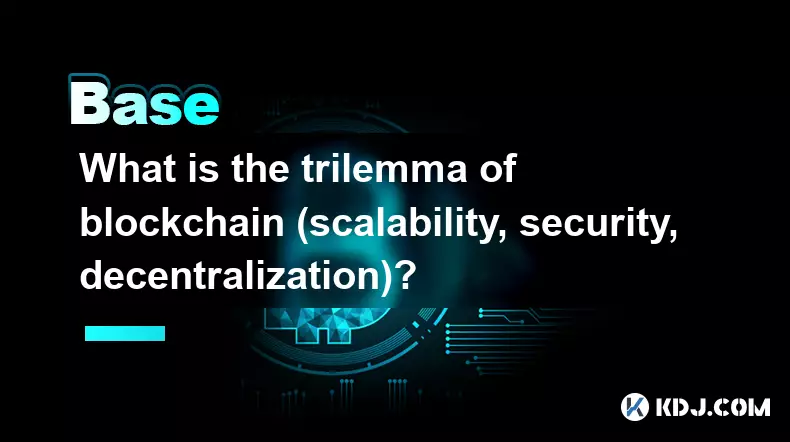
What is the trilemma of blockchain (scalability, security, decentralization)?
Oct 11,2025 at 10:36am
Understanding the Blockchain TrilemmaThe blockchain trilemma is a concept that highlights the inherent challenge in simultaneously achieving three cor...
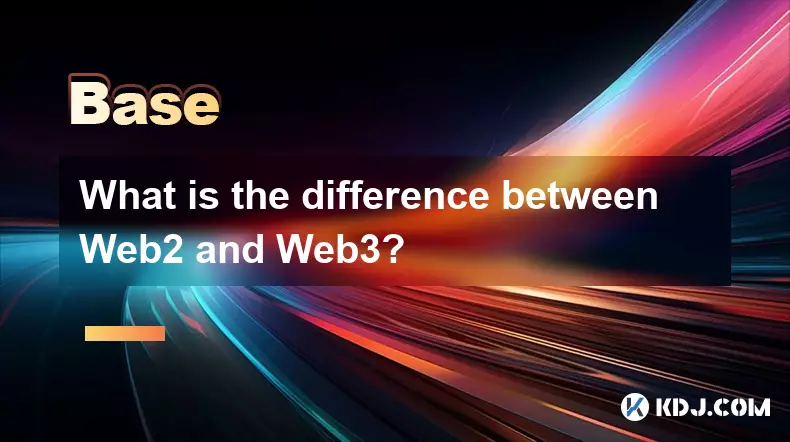
What is the difference between Web2 and Web3?
Oct 11,2025 at 03:19pm
Understanding the Structural Shift from Web2 to Web31. Web2 is characterized by centralized platforms where large corporations control user data, cont...

What is a "node" and what does it do?
Oct 10,2025 at 02:54pm
Understanding the Role of a Node in Blockchain Networks1. A node refers to any computer or device that participates in a blockchain network by maintai...
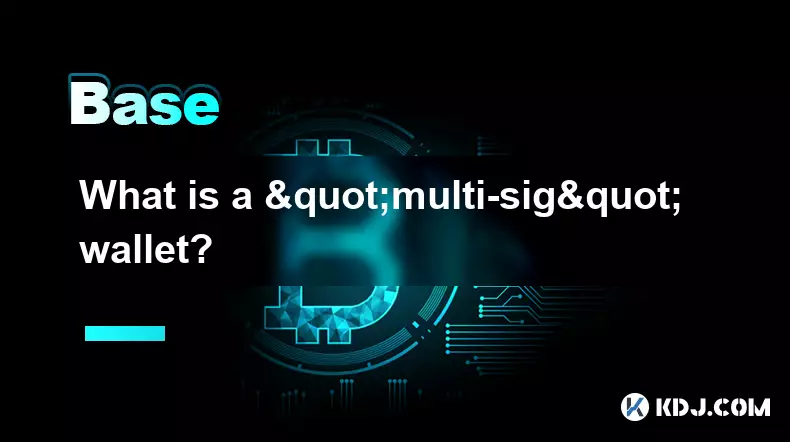
What is a "multi-sig" wallet?
Oct 11,2025 at 10:01am
Understanding Multi-Sig Wallets in the Cryptocurrency EcosystemA multi-signature (multi-sig) wallet is a type of digital wallet that requires more tha...
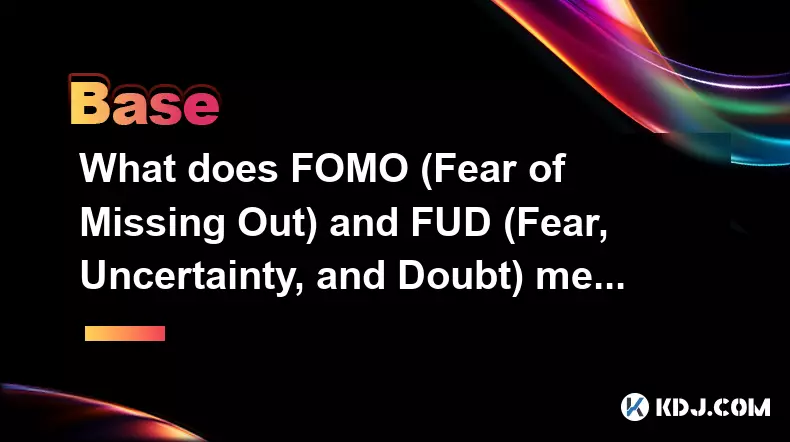
What does FOMO (Fear of Missing Out) and FUD (Fear, Uncertainty, and Doubt) mean?
Oct 10,2025 at 02:36pm
FOMO in the Cryptocurrency Market1. FOMO, or Fear of Missing Out, is a psychological trigger that drives individuals to act quickly out of concern the...
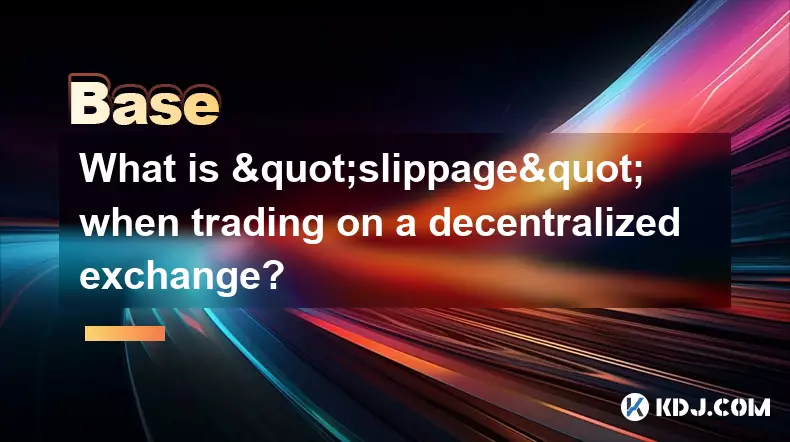
What is "slippage" when trading on a decentralized exchange?
Oct 11,2025 at 12:18pm
Understanding Slippage in Decentralized Exchange Trading1. Slippage refers to the difference between the expected price of a trade and the actual pric...

What is the trilemma of blockchain (scalability, security, decentralization)?
Oct 11,2025 at 10:36am
Understanding the Blockchain TrilemmaThe blockchain trilemma is a concept that highlights the inherent challenge in simultaneously achieving three cor...

What is the difference between Web2 and Web3?
Oct 11,2025 at 03:19pm
Understanding the Structural Shift from Web2 to Web31. Web2 is characterized by centralized platforms where large corporations control user data, cont...

What is a "node" and what does it do?
Oct 10,2025 at 02:54pm
Understanding the Role of a Node in Blockchain Networks1. A node refers to any computer or device that participates in a blockchain network by maintai...

What is a "multi-sig" wallet?
Oct 11,2025 at 10:01am
Understanding Multi-Sig Wallets in the Cryptocurrency EcosystemA multi-signature (multi-sig) wallet is a type of digital wallet that requires more tha...

What does FOMO (Fear of Missing Out) and FUD (Fear, Uncertainty, and Doubt) mean?
Oct 10,2025 at 02:36pm
FOMO in the Cryptocurrency Market1. FOMO, or Fear of Missing Out, is a psychological trigger that drives individuals to act quickly out of concern the...

What is "slippage" when trading on a decentralized exchange?
Oct 11,2025 at 12:18pm
Understanding Slippage in Decentralized Exchange Trading1. Slippage refers to the difference between the expected price of a trade and the actual pric...
See all articles





















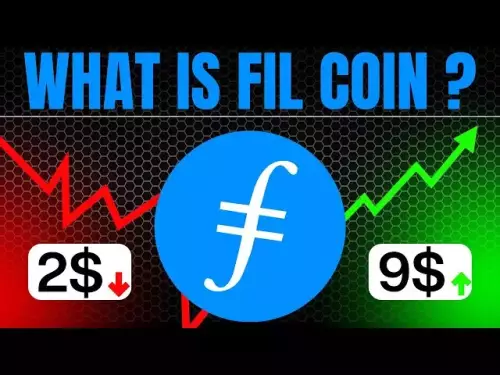




![Internet Computer Price Prediction [ICP Crypto Is A Hold?] Here’s Why Internet Computer Price Prediction [ICP Crypto Is A Hold?] Here’s Why](/uploads/2025/10/11/cryptocurrencies-news/videos/internet-computer-price-prediction-icp-crypto-hold/68e9ac40cf659_image_500_375.webp)















































